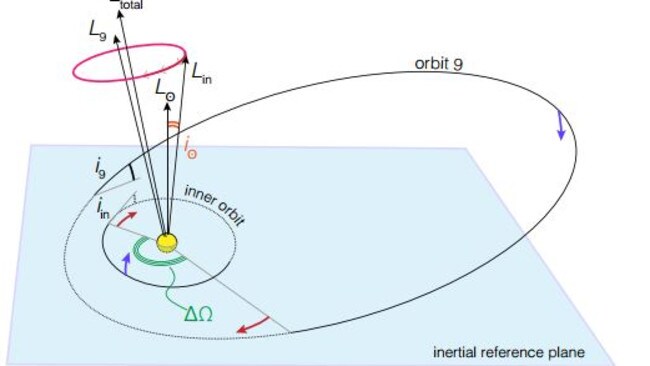
THE hunt for the elusive Planet Nine
could be over within 16 months, according to one of the scientists who
first predicted its existence.
The mammoth
celestial body has so far escaped our detection but the currently
hypothetical planet which is believed to sit at the edge of our solar
system certainly seems to make its presence known.The scientists who first suggested its existence earlier this year believe they’ve found further proof of the influence it yields over its cosmic neighbours.
Researchers the University of Technology California claim Planet Nine is responsible for causing the solar system to “wobble” due to its massive size.
Konstantin Batygin and Mike Brown first discovered the planet’s existence through mathematical modelling and computer simulations. They presented their evidence in January but the world has not yet been able to observe the planet directly.
Even though its believed to be 10 times the size of Earth, it has likely escaped the gaze of telescopes because it is so far away from the Sun.
This week the pair of scientists, along with fellow astronomer Elizabeth Bailey, stoked the flames of speculation by presenting a study at the annual meeting of planetary scientists of the American Astronomical Society claiming the mysterious planet is responsible for the perceived tilt of the sun.
We’ve known that the sun’s rotational axis is tilted for about 200 years, but scientists have never understood exactly why.
Bailey, Batygin and Brown believe a large planet lurking in the depths of the solar system is responsible and the latest addition to their theory was published this week by the Astrophysical Journal.
“Because Planet Nine is so massive and has an orbit tilted compared to the other planets, the solar system has no choice but to slowly twist out of alignment,” lead author Elizabeth Bailey said in a statement.

It’s a quirk that has long troubled scientists.
“It’s such a deep-rooted mystery and so difficult to explain that people just don’t talk about it,” said Mr Brown. “If you ask yourself where the sun is tilted in real life there’s where we predict it should be,” he added
He believes it’s a matter of time until we have visual confirmation of Planet Nine saying he is “pretty sure” we’ll track it down within about 16 months.
“I think that there’ll be enough people looking for it that … somebody’s actually going to track this down,” he said.
At the “next one of these (conferences) we’ll be talking about finding Planet Nine instead of just looking for it,” he added.
For now, researchers are left to speculating over the mind boggling measurements associated with the elusive space body.
Thought to be roughly 10 times the mass of planet Earth, scientists believe it lies hundreds of astronomical units from the sun. One astronomical unit is the mean distance between the earth and the sun which equates to 149.6 million kilometres.
They also think it would take the planet between 10,000 and 20,000 years to make just one full orbit around the sun.
No comments:
Post a Comment